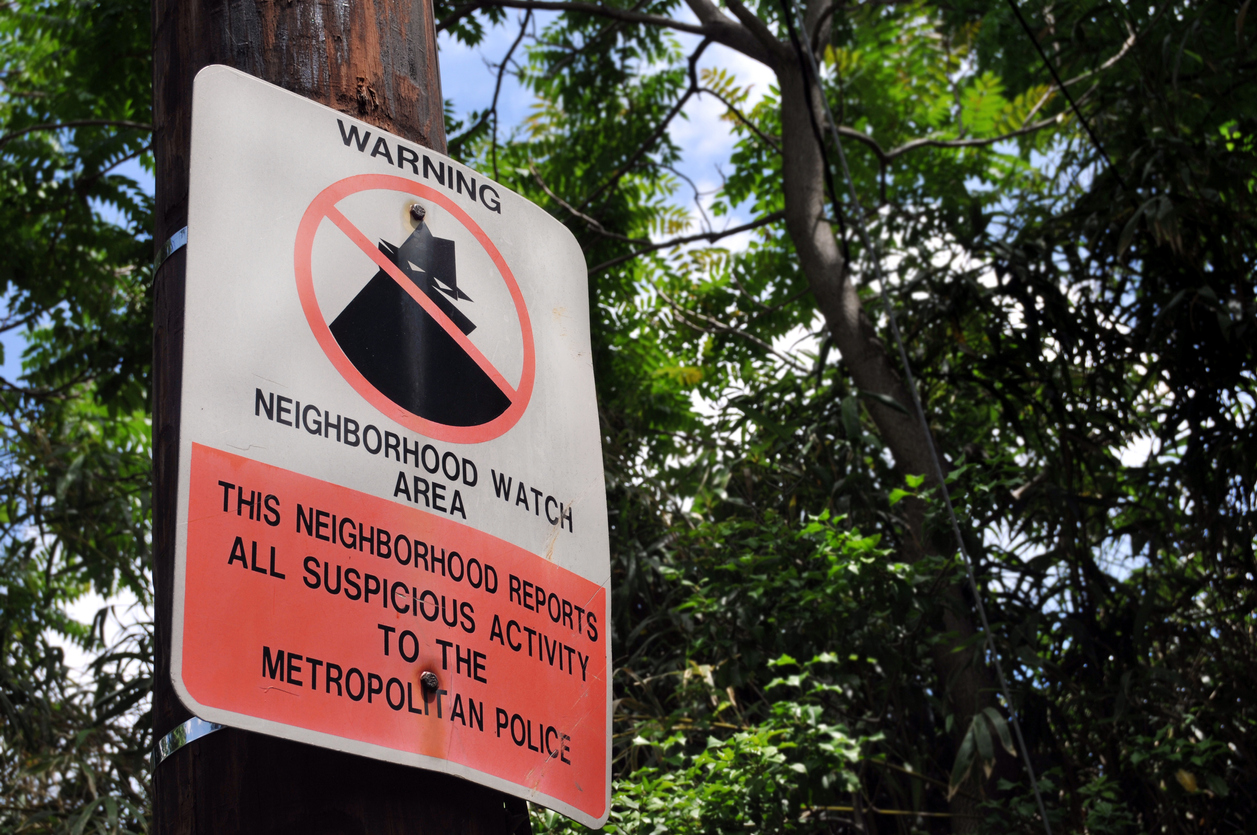
Neighborhoods within homeowners associations are always looking for ways to enhance the safety of their surroundings. From gated communities to keeping certain common areas under supervision to license plate readers, there are various ways to keep residents and their homes safe. Another way that HOAs might invest in their security is through neighborhood crime watch programs.
These groups are resourceful in keeping crime under a watchful eye in neighborhoods and can make residents feel safe. However, with news stories surrounding neighborhood watch programs gone wrong, the potential for liability exposures is always relevant.
Here are a few examples of the possible challenges that can arise from crime watch committees within HOAs.
False Sense of Security
The neighborhood’s residents might assume that all crime will disappear by having a crime watch program in place. This could create a false sense of security among residents, inviting various issues to occur. Miscommunication may promote the idea of false security, so HOA’s need to continue communicating with the residents the extent of the crime program’s responsibilities. Crime watch programs don’t replace law enforcement’s role as they simply act as an instrument in bringing about concerns and suspicious activity to local police.
Resident Safety & Livelihood
If a crime watch member intervenes in a security situation, they could end up endangering everyone else around them. Any and all people involved, if armed and aggressive, risk jeopardizing their well-being and the safety of surrounding people.
A crime watch member may think they have control over the scenario. However, if either the suspicious person(s) or crime watch member engages in conflict, the risk of injury, or even death increases. Instead of doing this, the committee member should get in touch with law enforcement right away to investigate before any action takes place. The safety of the crime watch members is just as important as the safety of others around them.
Legal Liability for HOAs
A crime watch group serves as the police department’s eyes and ears in all community safety matters. However, it’s not a substitute. If crime watch members act in place of the police, an HOA will have increased liabilities. While it’s good to have this service as part of an HOA Risk Management plan, making sure to understand its limits is equally as important.
Since HOAs exist as legal entities, they are subject to legal ramifications if something related to one of its committees goes wrong. If an HOA does opt to create a neighborhood crime program, it should take a few precautions to ensure the safety of all involved.
Before creating a program, the HOA needs to establish clear guidelines and procedures for members to follow. The HOA needs to communicate with both crime watch members and homeowners in the HOA about the program’s specific responsibilities and limitations, so all parties are informed. Homeowners should understand the extent of the program’s powers and understand when the committee is not abiding by its sole purpose.
Educating the HOA and its members about the pros and cons of a crime watch program can help everyone stay safe and make the safest decisions for everyone.
About Kevin Davis Insurance Services
For over 35 years, Kevin Davis Insurance Services has built an impressive reputation as a strong wholesale broker offering insurance products for the community association industry. Our president Kevin Davis and his team take pride in offering committed services to the community association market and providing them with unparalleled access to high-quality coverage, competitive premiums, superior markets, and detailed customer service. To learn more about the coverage we offer, contact us toll-free at (855)-790-7393 to speak with one of our representatives.


